The Osiris Tomb in Giza
The Osiris Tomb at Giza: Research report by Gregor Spörri
The Osiris Tomb (also known as the Osiris Shaft) is located not far from the Great Pyramids.
The existence of the mysterious underground tomb was long dismissed by experts as a figment of the imagination of the Greek historian, geographer and ethnologist Herodotus of Halicarnassus. This Herodotus traveled to Egypt around 450 BC. In his 2nd book of histories, he tells of a tomb under the rocky hill on which the Great Pyramids stand. And in this tomb, Herodotus noted, an artificial lake surrounded an island on which Pharaoh Cheops was buried.
In 1933/34, the site was actually rediscovered by Egyptologist Selim Hassan during excavations.
From 2008 it was also researched in more detail by the chief Egyptologist Zahi Hawass.
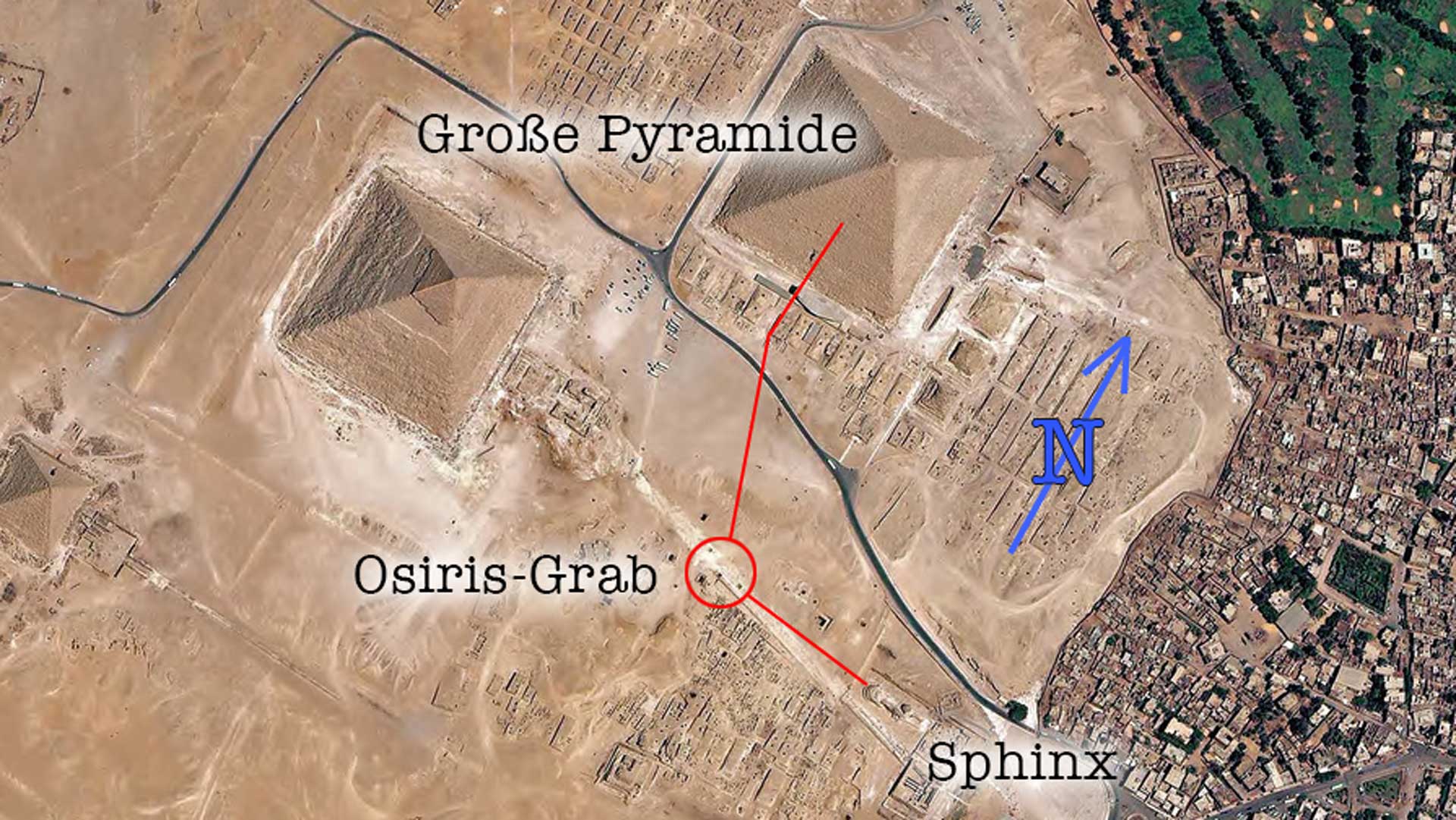
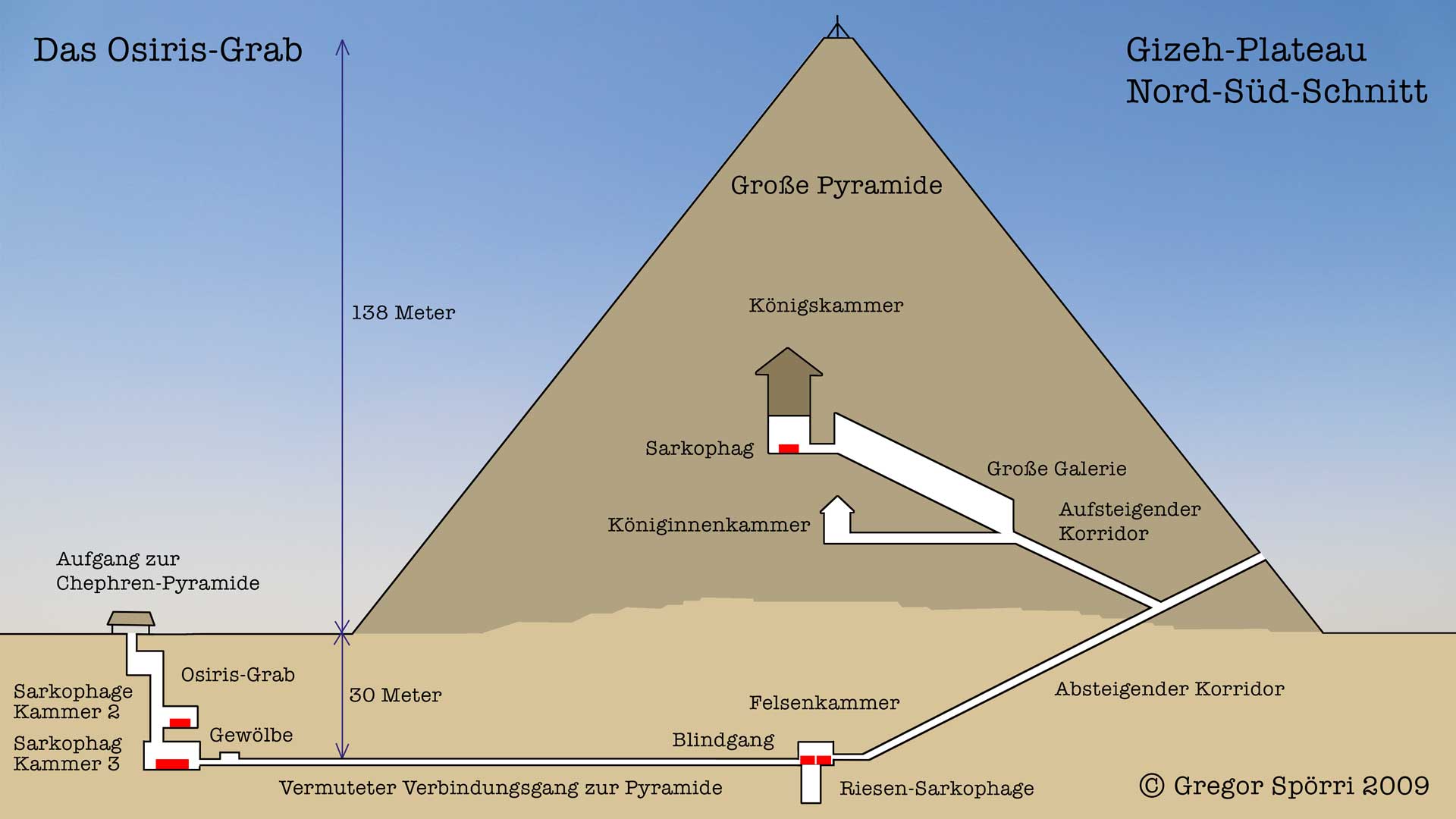


Descent into the underworld
A few years ago, I had the rare opportunity to explore the three chambers on top of each other, of which there are only a few photographs. The entrance to the underworld is well hidden under the dam-like connecting path (ascent) that leads from the so-called Valley Temple past the Sphinx up to the so-called Mortuary Temple near the Pyramid of Khafre.
1st level
I reach the 1st level via a ladder that doesn’t inspire much confidence. The chamber there lies at a depth of six meters, is 4 x 10 meters in size and completely empty. From the 1st level, a second vertical shaft leads dizzyingly far into the depths. One of the two iron ladders is completely rusted through and the other is also in a rather precarious condition.
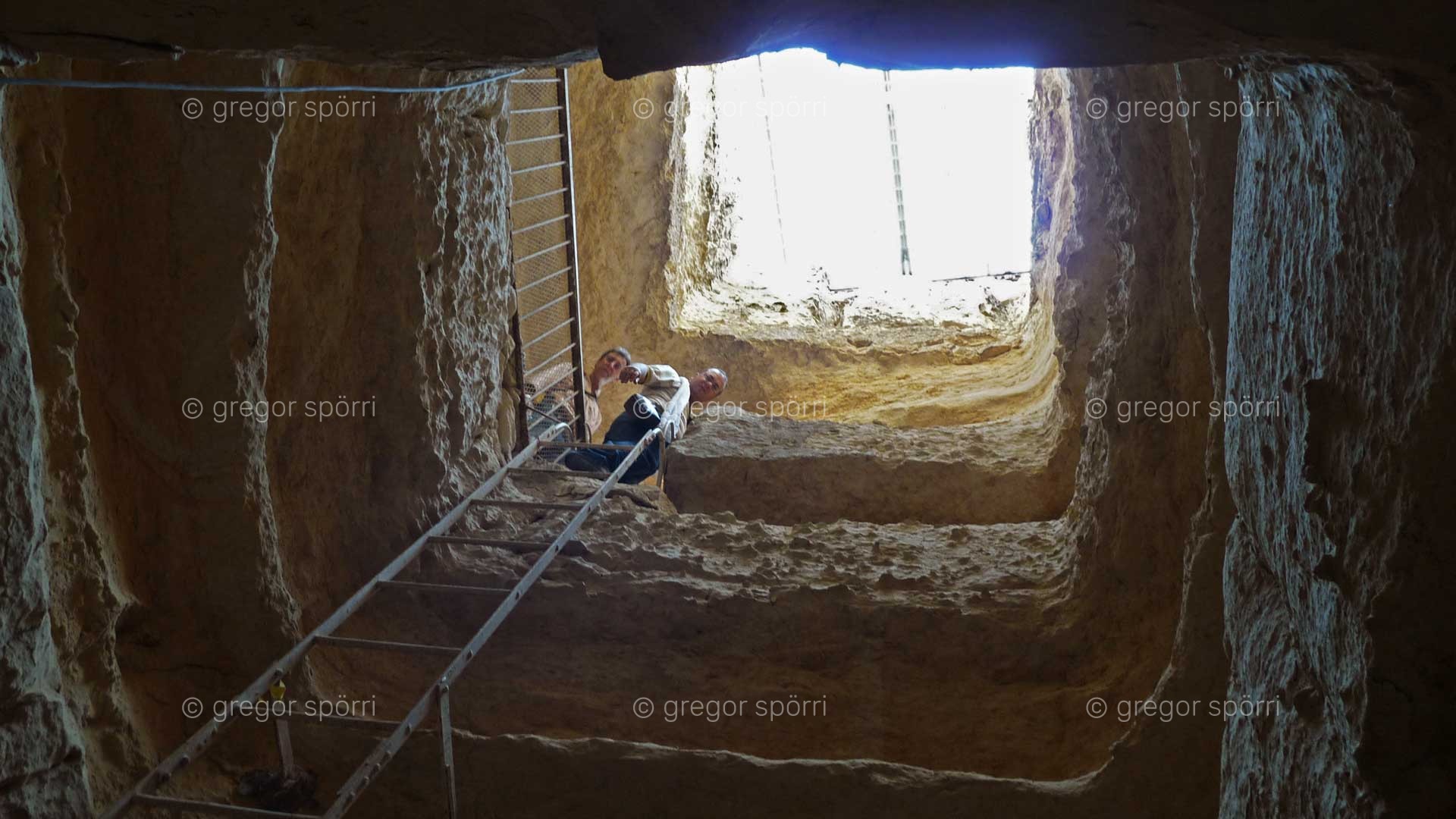
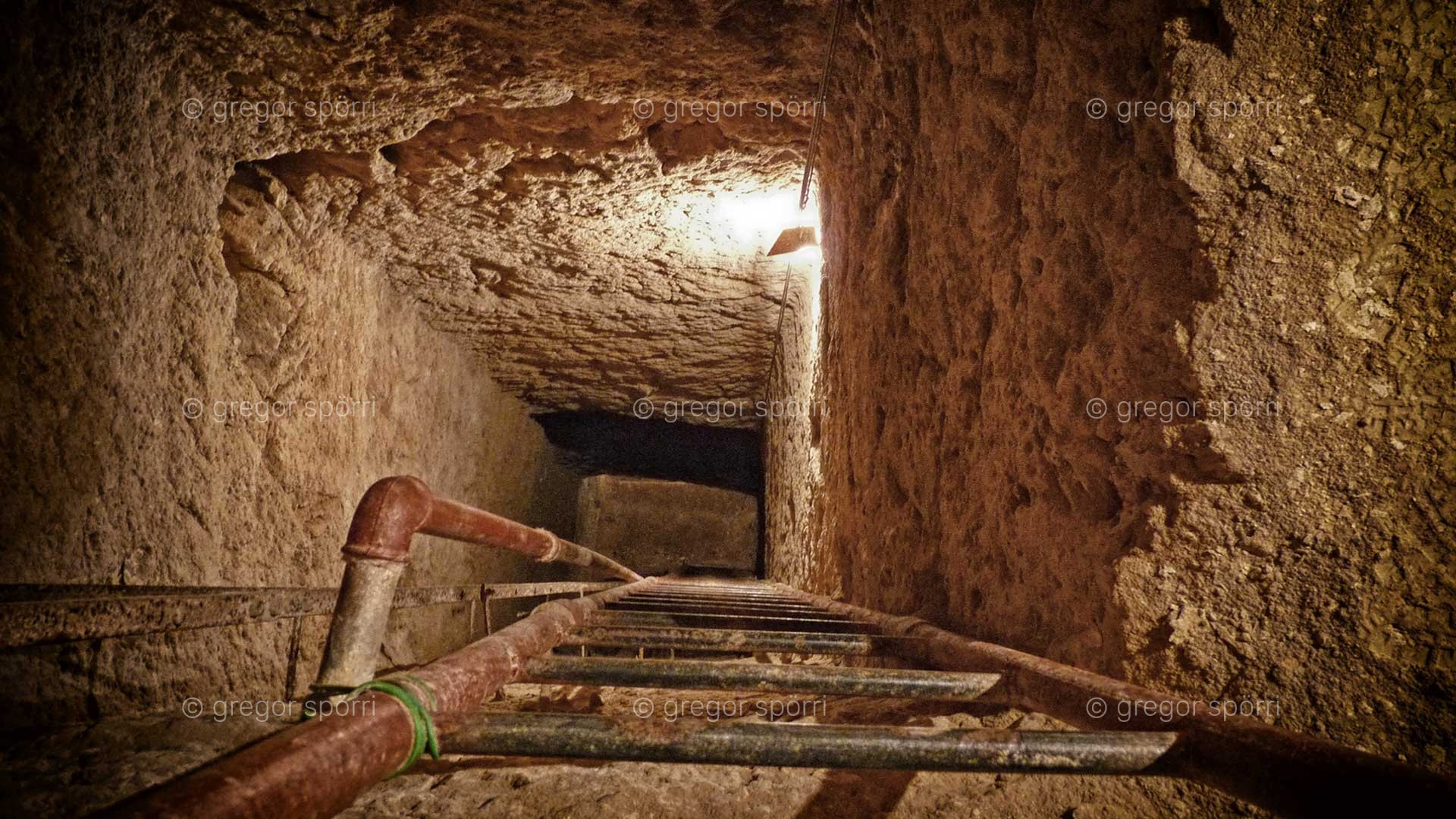
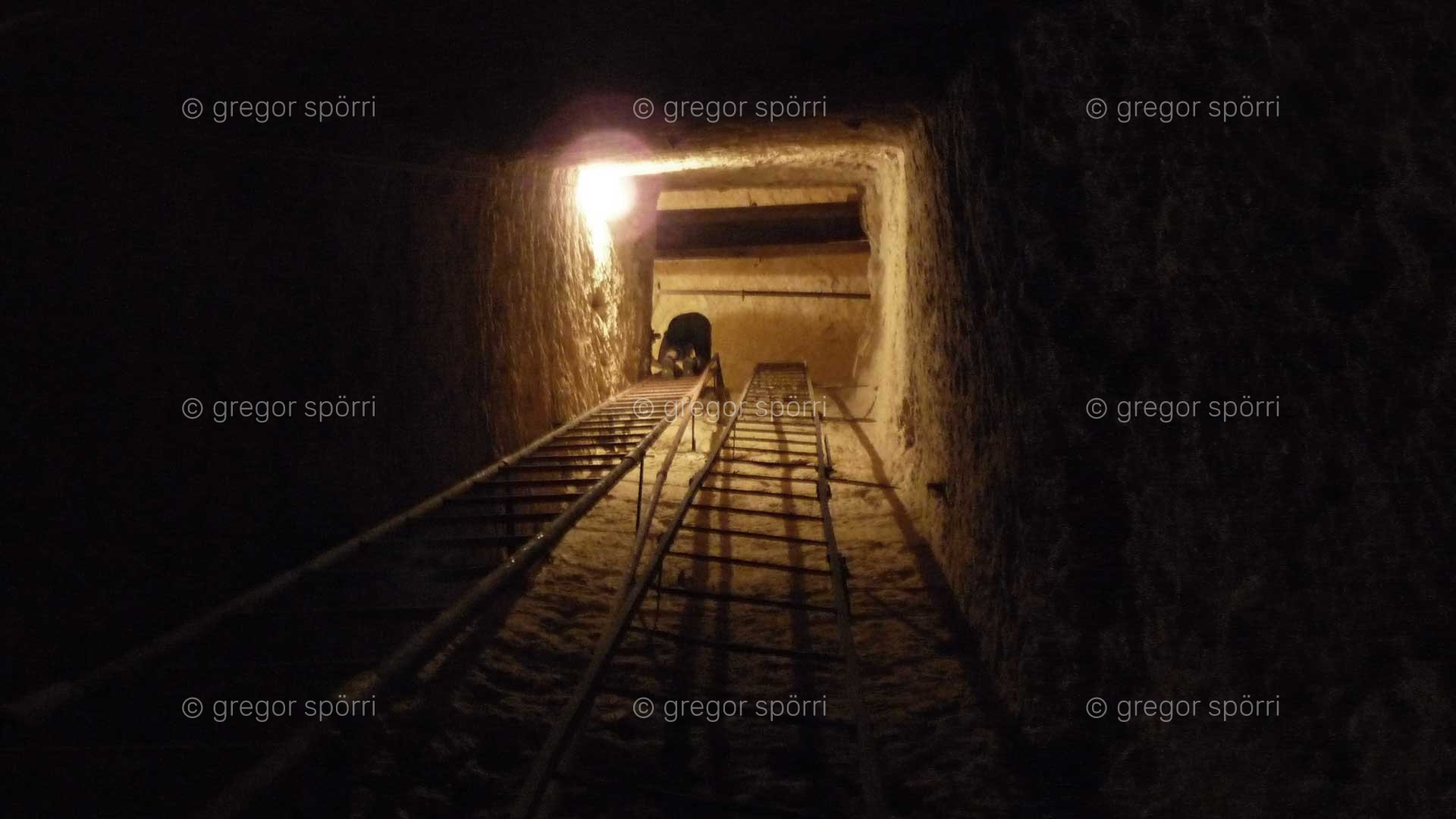
2nd level
The 2nd level chamber is located at a depth of 18 meters. It measures 5 × 8 meters and is divided into eight niches. Based on clay shards and bone analyses, the chamber was dated to the late period of Ancient Egypt around 500 BC.
There are massive granite sarcophagi in two of the eight niches. I discover human bone remains and teeth in the coffin in niche no. 2. The container also blocks an 80 × 100 centimeter passage leading east towards the Valley Temple and the Sphinx. The coffin was pushed into the aisle with such force that it broke. The coffin in niche no. 7 is empty. In principle, only authorized persons have access to this facility. So why was the corridor blocked? What is there in the Osiris Tomb at Giza that you are not allowed to see and/or explore?
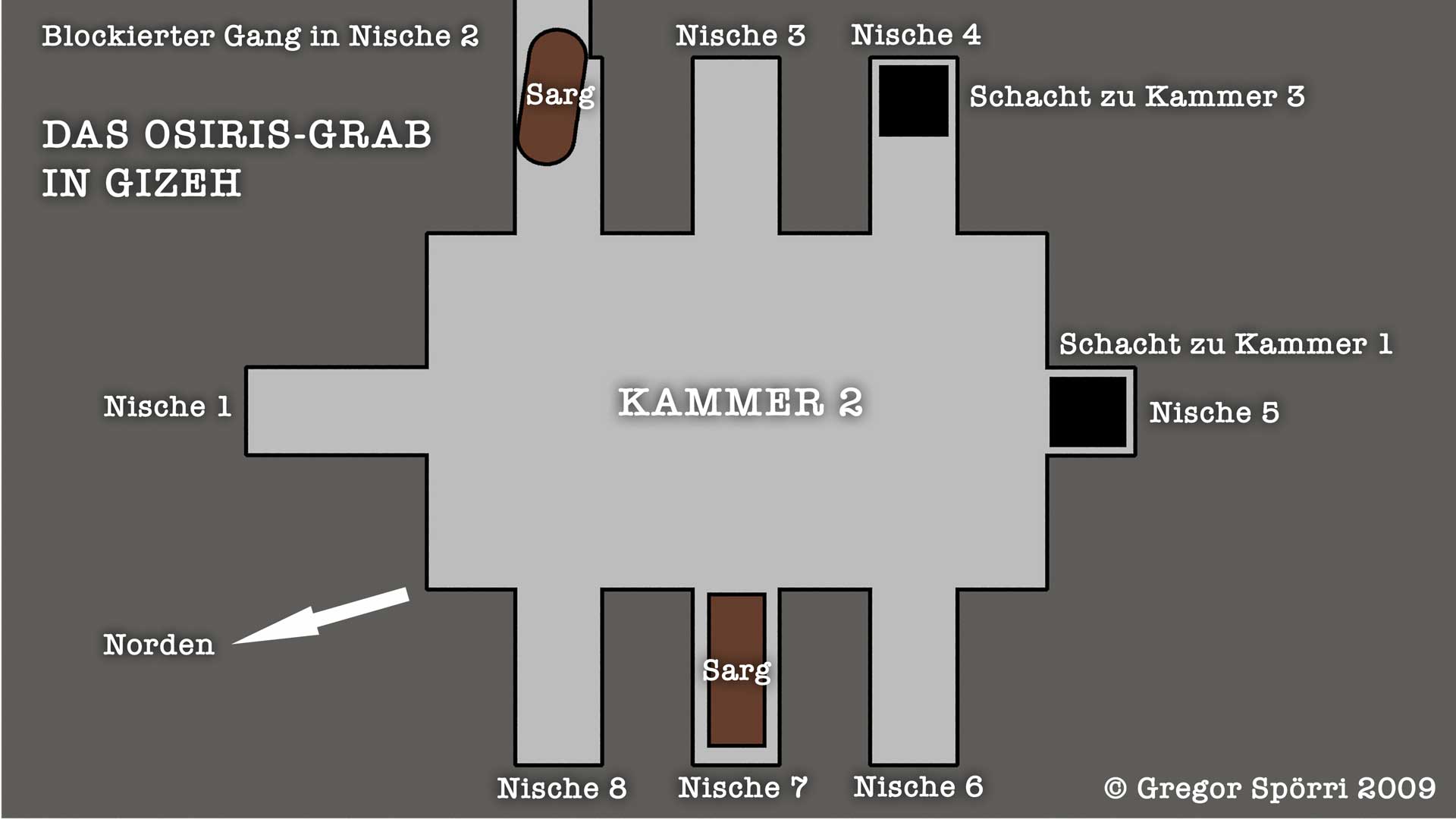
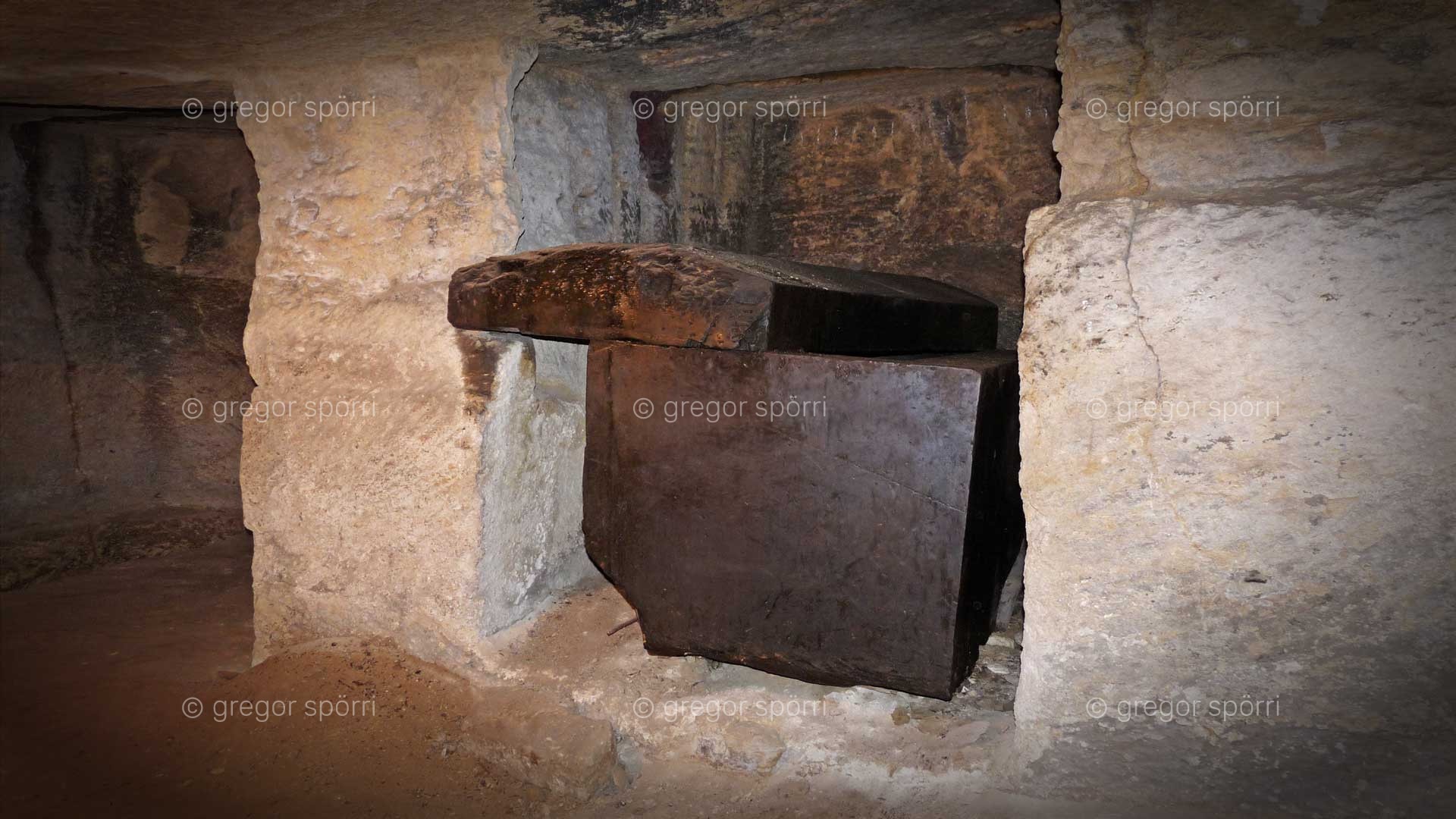

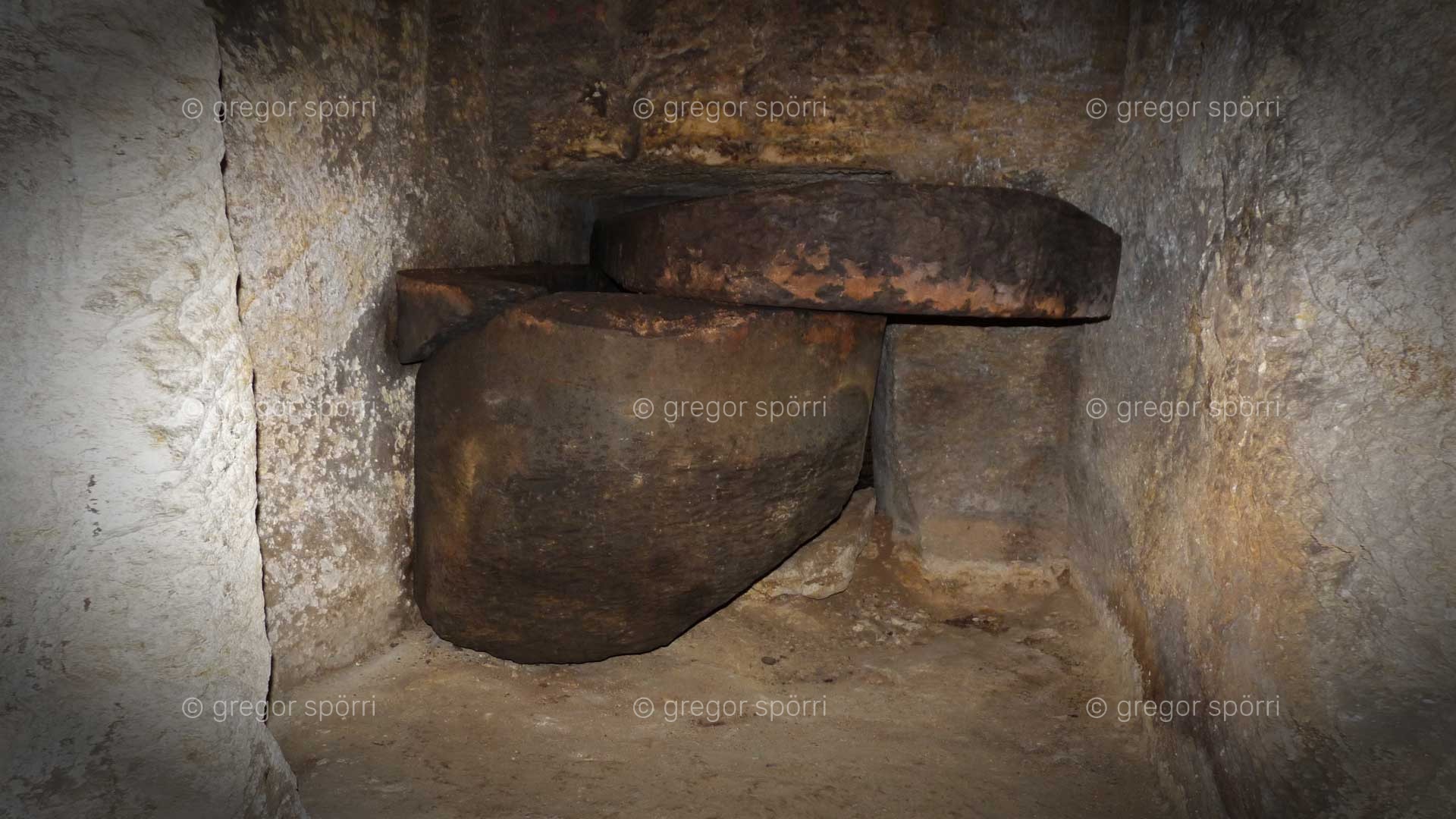
Questionable dating
Around 500 BC, tombs in Egypt were usually richly decorated with cartouches, colorful reliefs and inscriptions. There is none of this in the Osiris Tomb. Rather, the bare ceilings, walls, floors and sarcophagi are part of a series of megalithic buildings that probably date from a much older era: the Giza pyramids and the Valley Temple, the Osireion in Abydos, the Serapeum in Sakkara …
Burial sites were often used several times. This means that after the old sites had been plundered by grave robbers, which was the case sooner or later with almost every grave, new “tenants” moved in.
It is therefore quite possible that the analyzed pottery as well as the bones come from such “subsequent tenants”, which ultimately leads to an incorrect (too young) dating of the burial complex.

3rd level
From niche no. 4 on the 2nd level, a shaft measuring almost 2 × 2 meters leads even deeper underground. The descent is another adventure. Eventually, however, I reach the so-called Osiris Tomb at a depth of 30 meters.
The only light down there comes from an old construction headlamp and my headlamp. I try to get my bearings: In the middle of the spacious chamber is a lake – exactly as described by Herodotus. A rectangular platform in the middle. The remains of square columns can be seen at the four corners of the platform and on the ceiling. Pressure changes, tectonic shifts or an earthquake probably caused the columns to collapse a long time ago.
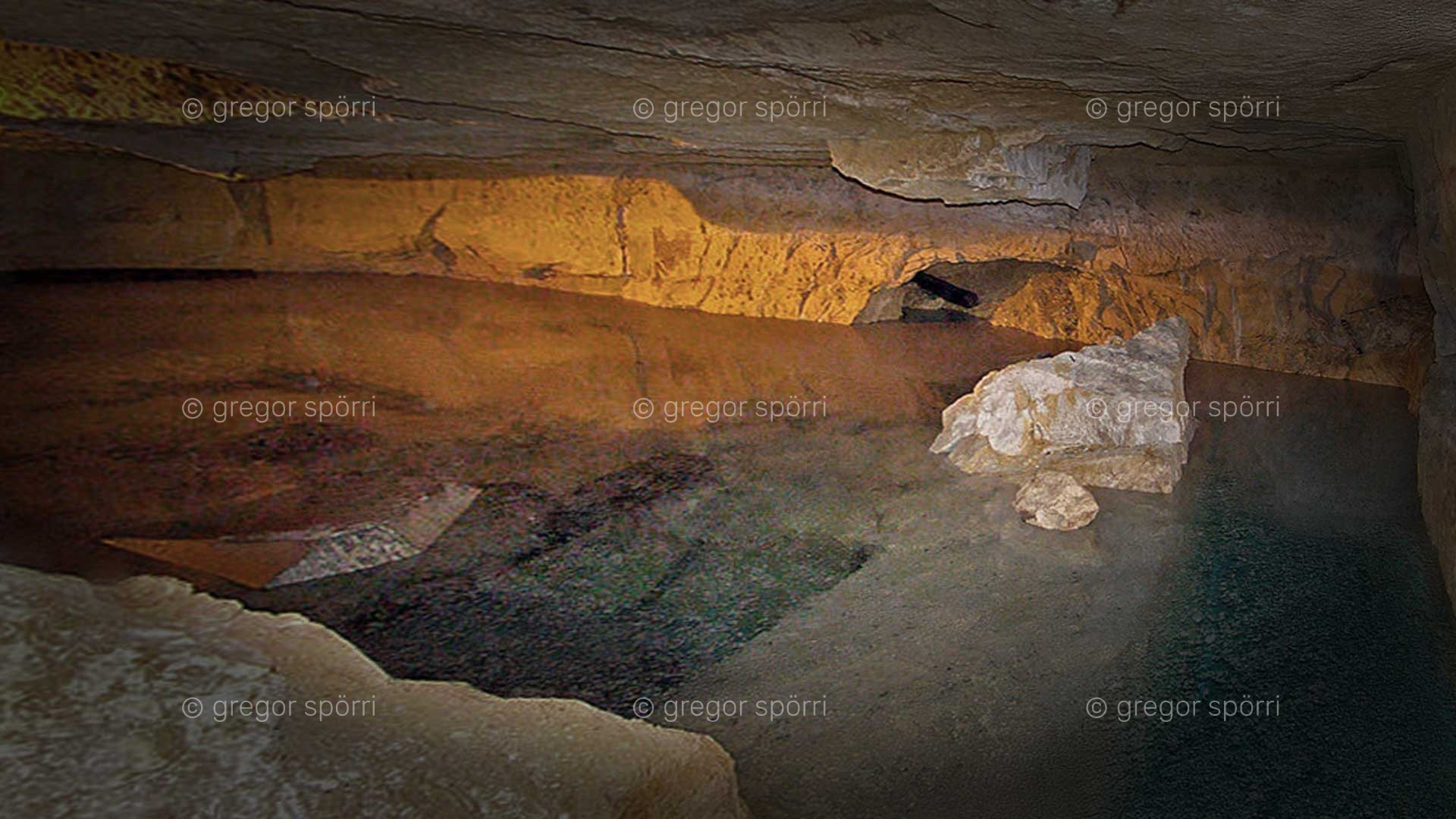
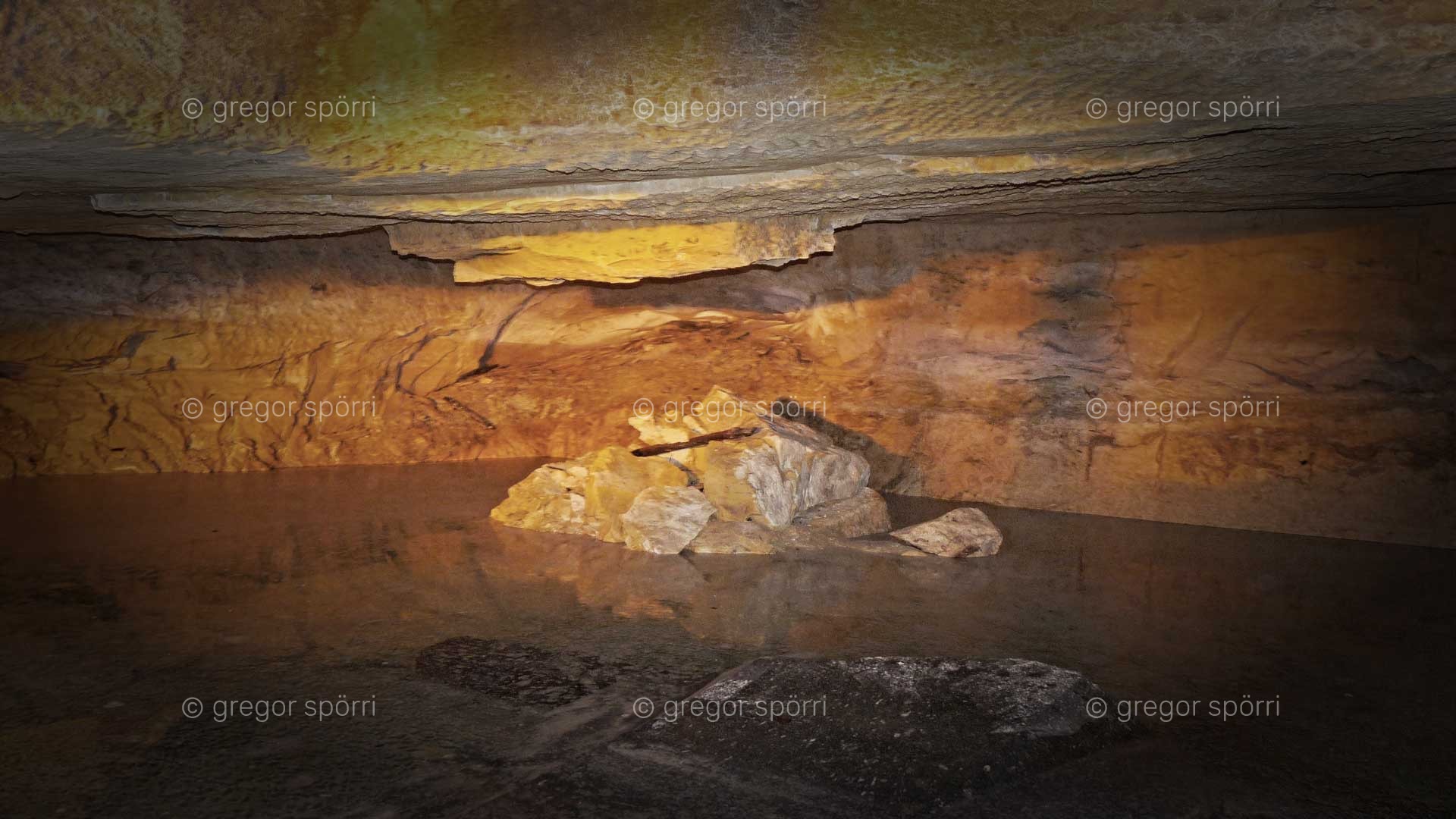
The so-called Osiris Tomb
A rectangular recess is embedded in the stone platform. Embedded in it is a mighty granite sarcophagus with a rounded head section. I estimate its size and calculate a weight of 10 to 15 tons. When I look at the monstrous container, I automatically ask myself: How did they get this thing down here?
The water in the chamber is currently much higher than in Herodotus’ time. The island and the sarcophagus in which, according to Herodotus, the builder and pharaoh Cheops is said to have rested, are flooded. The coffin lid was placed across two wooden beams. The head section of the lid protrudes a little out of the water.
According to analyses of other finds, the 3rd level is around 5000 years old, a good twice as old as the second level. Such dating makes absolutely no sense, because you dig from top to bottom and not the other way around!
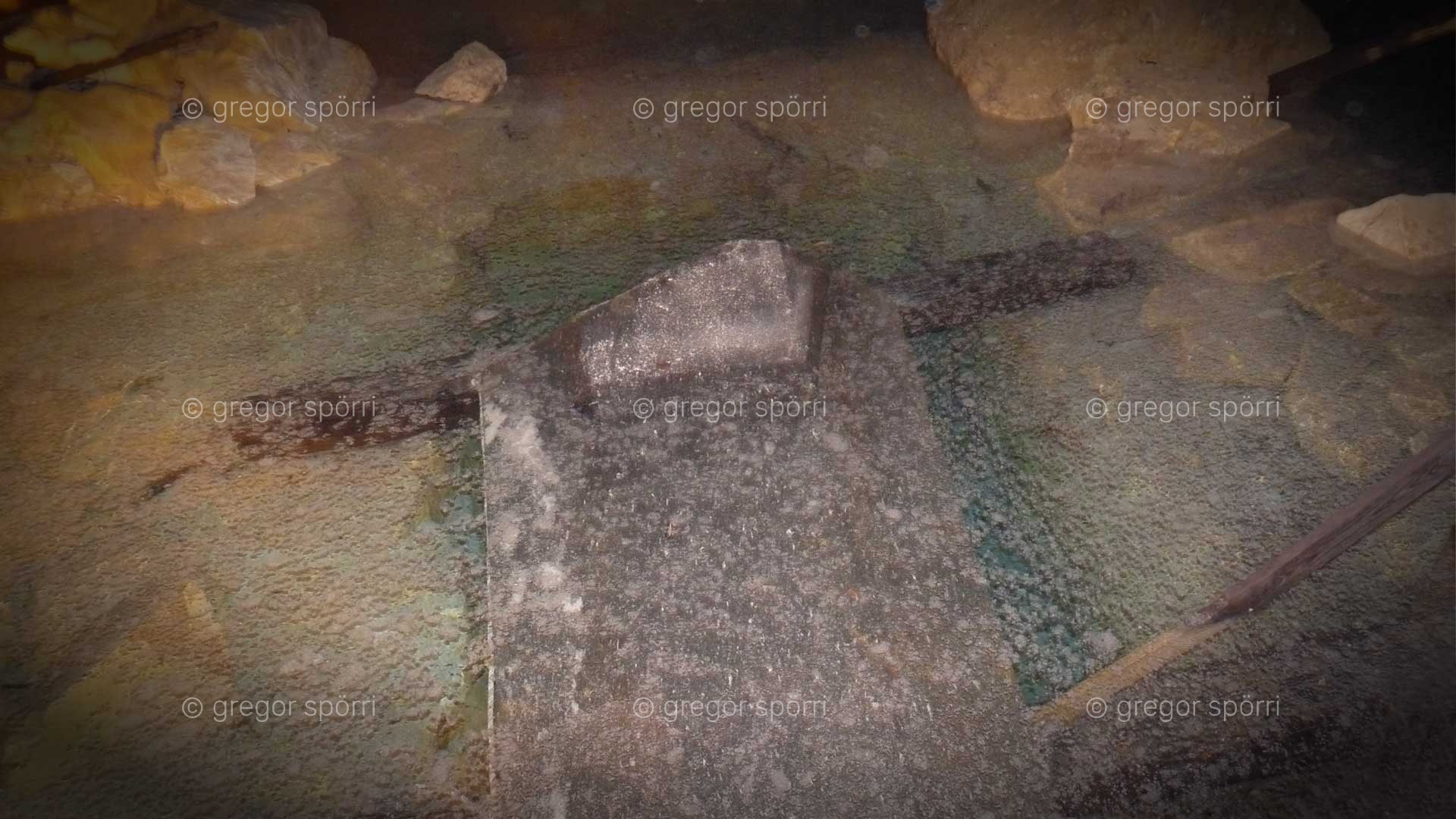
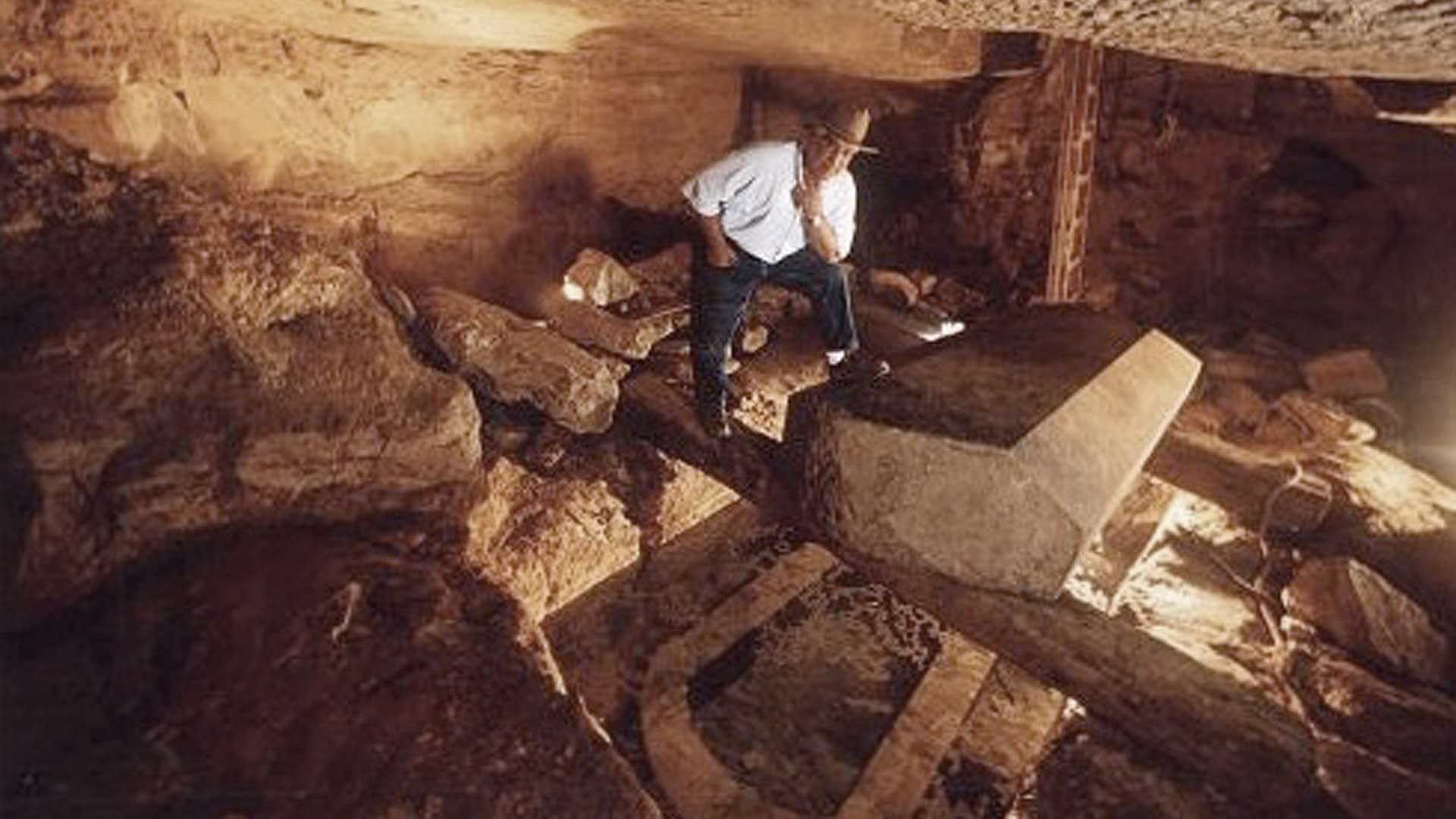
Mysterious corridors, vaults and tunnels
I reach the east wall of the burial chamber via a rickety wooden walkway. From there, a narrow corridor leads even deeper into the Egyptian underworld. I squeeze myself in. After about 20 meters I reach a small vault in which it is almost impossible to turn around. From here, a tunnel just 40 × 40 centimeters in size leads northwards towards the Great Pyramid. Next to it there is a second, equally small shaft that leads off to the east in the direction of the Sphinx. It is impossible to explore the tunnels. A few years ago, chief Egyptologist Zahi Hawass sent a young boy to explore the site. But it soon got stuck and had to be pulled out by the legs.
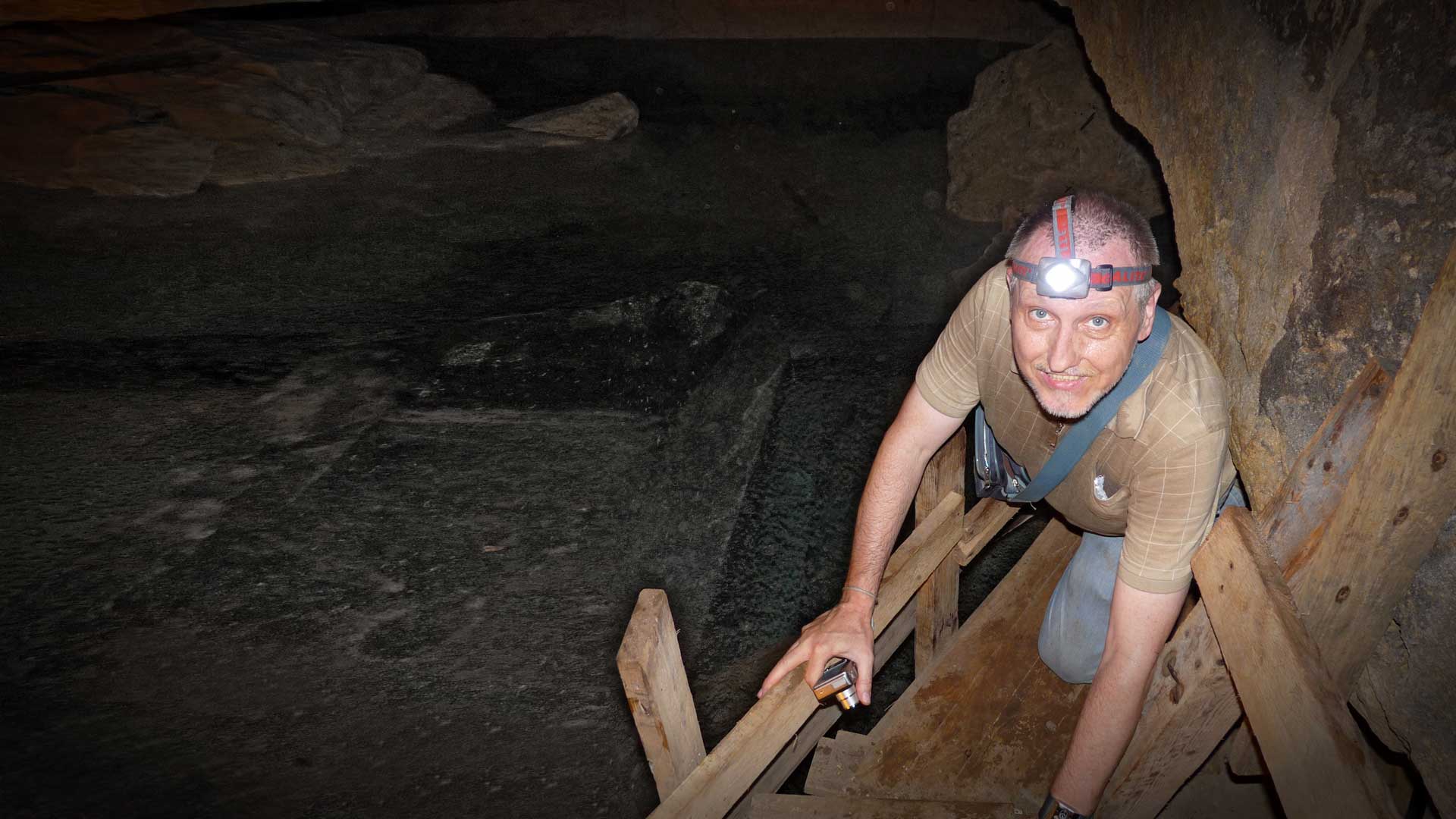
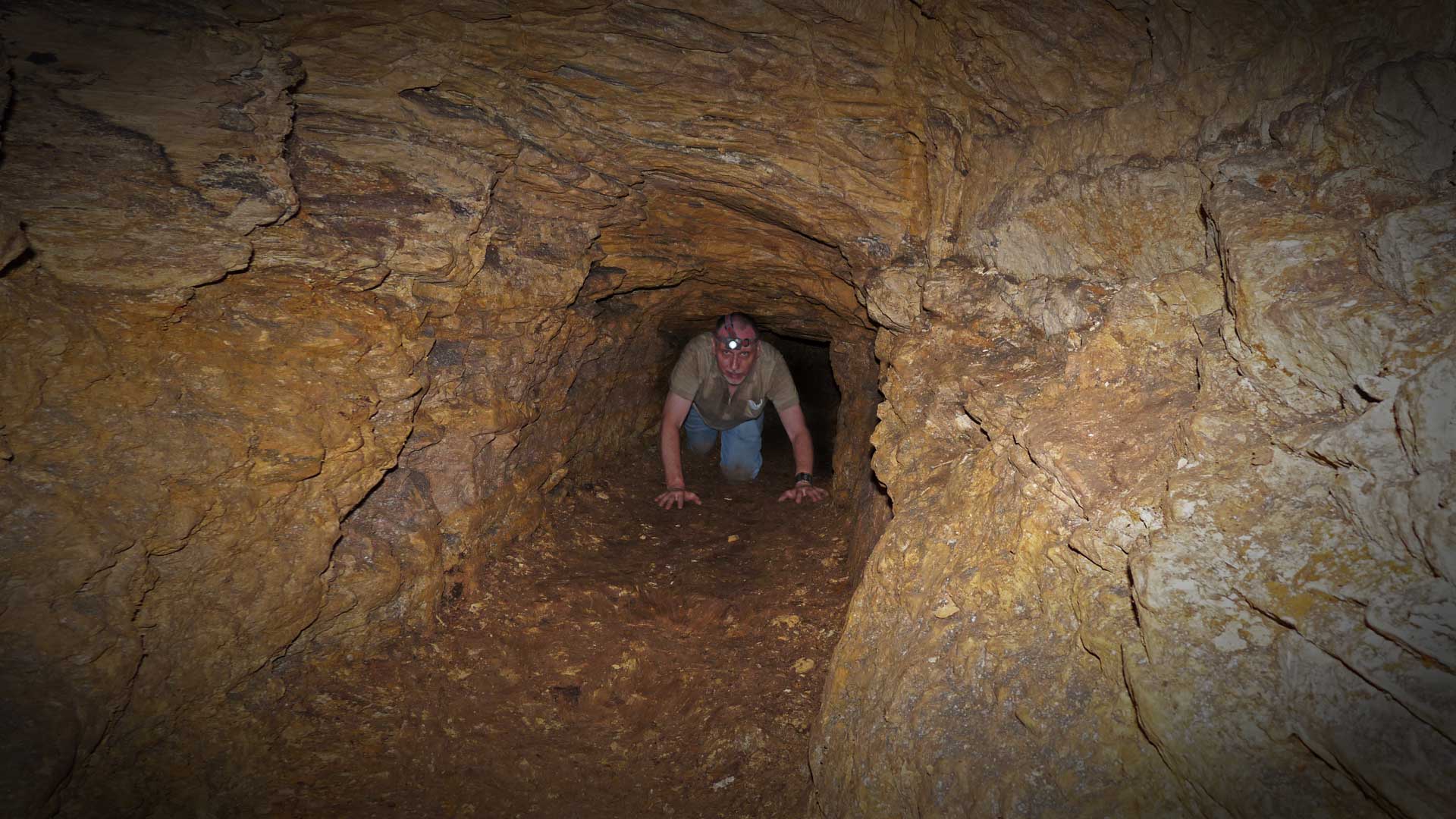
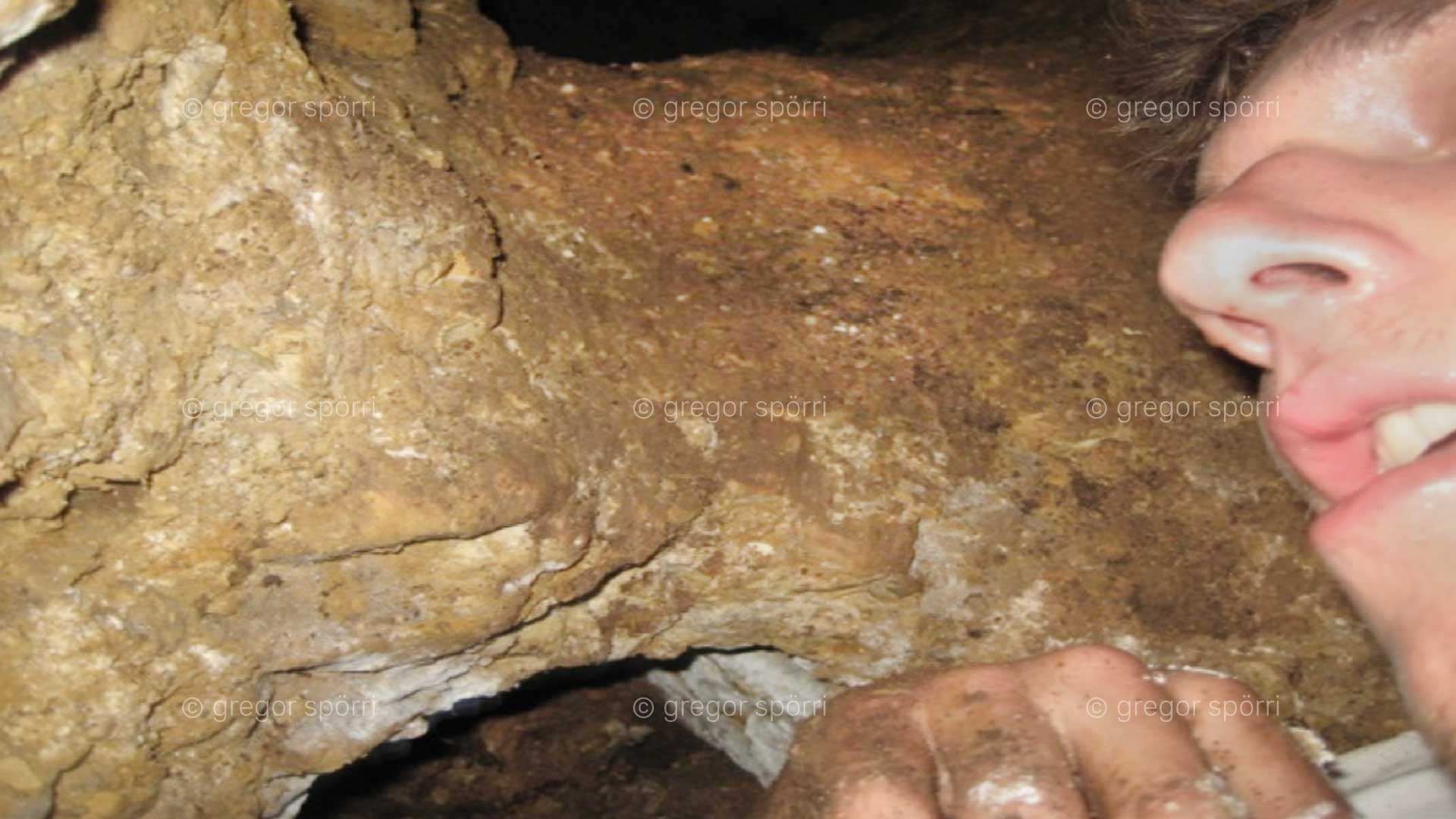
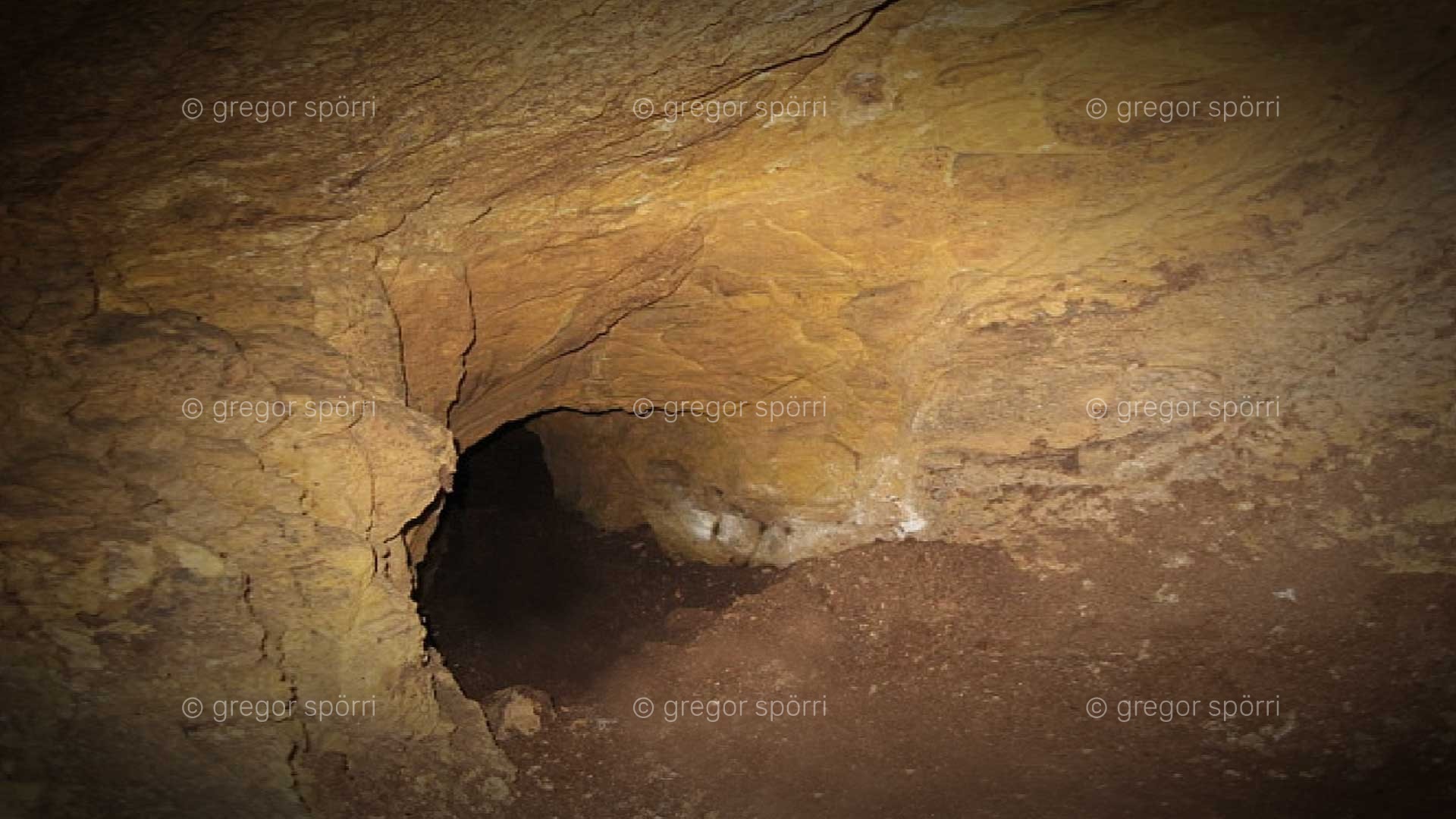


Conclusion and objections to Zahi Hawass’ theses
Based on pottery shards, bone remains and the arrangement of the four stone pillars on the rock slab of the 3rd level, Zahi Hawass believes he has discovered that the site is a symbolic tomb and a sacred place of worship for Osiris, the god of the dead (hence the name).
According to mythology, Osiris was murdered and dismembered by his brother Seth. Osiris’ wife Isis is said to have reassembled and revived her husband’s body. Since then, Osiris has been regarded as the judge of the dead and ruler of the underworld.
Zahi Hawass’ claims that Pharaoh Cheops had his pyramid built so close to the tomb of Osiris so that it would be on the sacred ground of the god.
My objections to this
1) One expects a sacred place of worship for a god like Osiris to be a magnificent building similar to the Valley Temple at the Sphinx and not an inconspicuous hole in the ground.
2) Human remains were apparently found in the supposed coffin of the gods, which suggests that the site served as a real burial place.
3) Zahi Hawass is said to have never scientifically proven his theories, which led to uncertainty and criticism among researchers. Further investigations of the plant are apparently not currently taking place.
Open questions
1) Was Cheops really buried in the so-called Osiris Tomb, as Herodotus reported? The pharaoh lived around 4500 years ago. However, his alleged grave is at least 500 years older. How does that work together?
2) How could only 40 × 40 centimeters small shafts be cut out of the rock in the direction of the pyramid and sphinx when not even children could fit into the tunnels?
3) Whoever dug these tunnels, how could they do so without artificial lighting and ventilation?
4) What purpose did these tunnels serve?
5) Where does the tunnel blocked by the sarcophagus on the 2nd level lead to?
Back to Mystery research